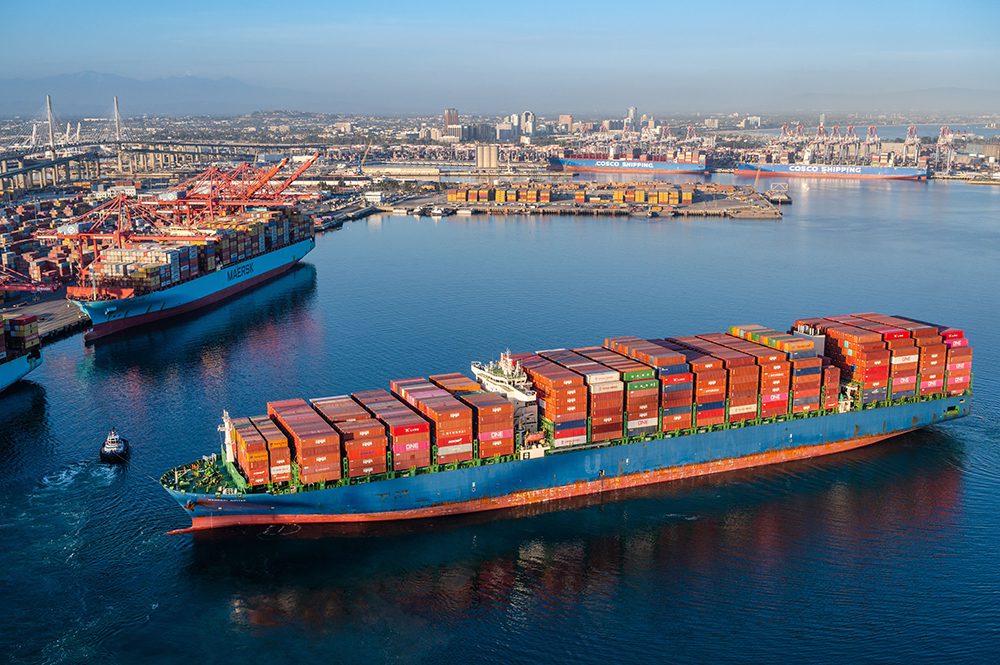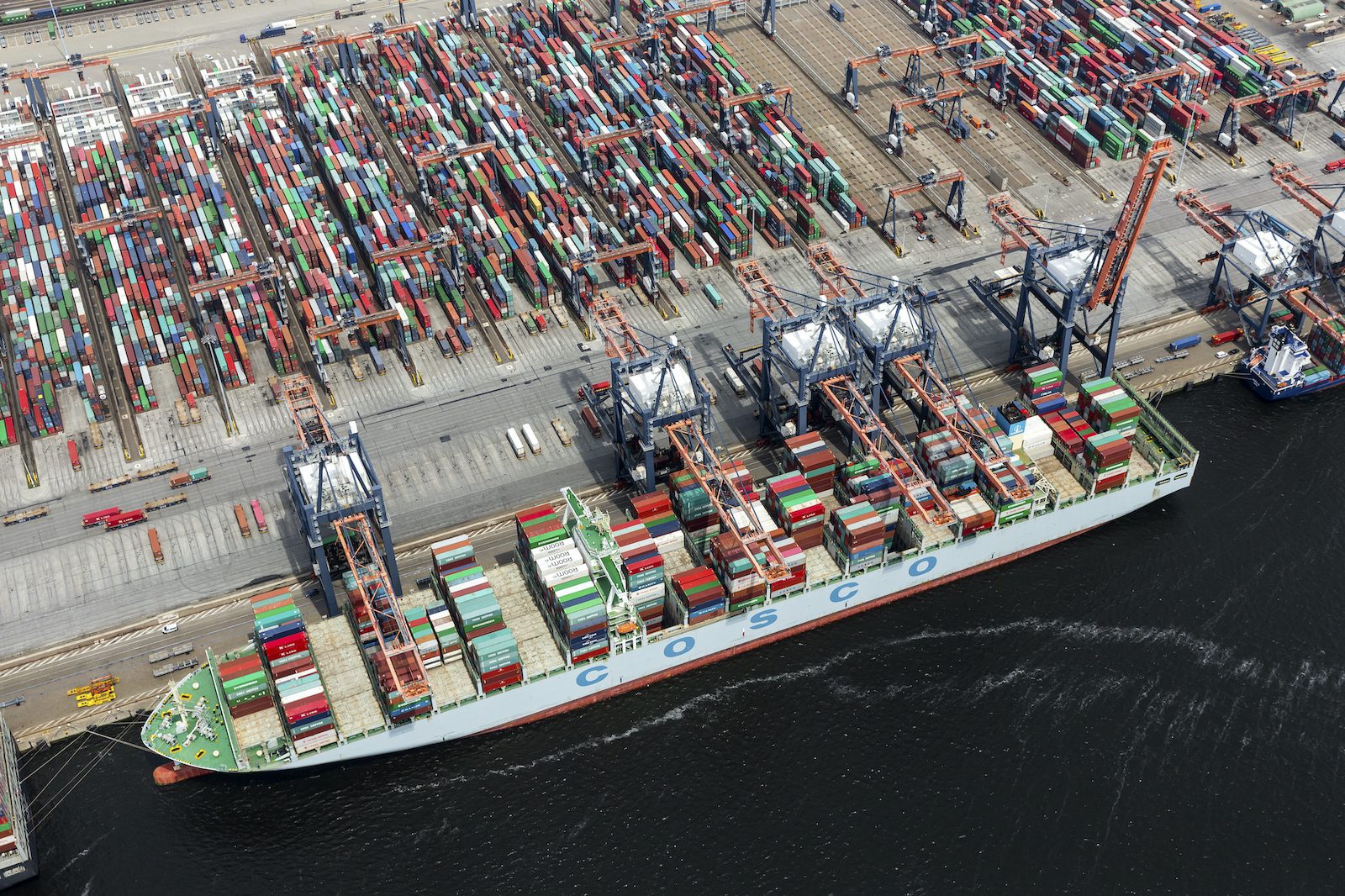Last year’s unprecedented containership backup in Southern California caused greenhouse gas emissions at the Port of Long Beach to rise above a 2005 baseline, erasing previous gains. In fact, emissions were up across the board in 2021 compared to the previous year.
The port’s annual emissions inventory report, presented to the Long Beach Board of Harbor Commissioners on Monday, showed emissions rising year over year in all four categories in 2021, including diesel soot, nitrogen oxides, sulfur oxides and greenhouse gas emissions.
While the port continues to meet 2023 target for diesel particulates and sulfur oxides, previous gains in reducing greenhouse gas emissions were erased, coming in 22% above a 2005 baseline. In the previous year’s inventory, GHG emissions were down 10% compared to 2005.
“Putting it simply, the pandemic created emissions-inducing bottlenecks in the supply chain,” said Long Beach Harbor Commission President Sharon L. Weissman. “No one could have foreseen this once-in-a-lifetime event, but we are not discouraged by this temporary impediment, and our goal to be a zero-emissions port remains.”
The 2021 inventory found diesel particulates down 88%, nitrogen oxides (NOx) have decreased 49%, and sulfur oxides (SOx) have decreased 96% compared to 2005. This compares to the previous inventory that found diesel particulates had decreased 90%, nitrogen oxides 62%, and sulfur oxides 97%, again compared to that 2005 baseline.
Are Ship Backlogs Contributing to Higher Air Pollution Near Key U.S. Ports?
In its announcement, the Port of Long Beach said the global supply chain congestion resulted in a “perfect storm” of events that caused emissions to rise in San Pedro Bay. For one, the containership backup which saw more ships at anchor and loitering. Also longer vessel calls due to a COVID-19 safety agreement that capped the size of work groups. More cargo-handling equipment was used to keep up with the activity, and trucks waited longer in queues as a result of systemwide logistics issues in the Harbor District, across the region, and throughout the nation. Additionally, a higher than usual number of visiting ships were not equipped with shore power, and other ships used less shore power due to a California emergency energy-restriction order event.
“Many of the negative conditions which created this perfect storm have improved,” said Port of Long Beach Executive Director Mario Cordero. “In recent months, as we’ve left behind the surge of COVID, great strides have been made in reducing the number of ships waiting at anchor. Looking ahead, a vessel queuing program put into place last year to relieve congestion is also expected to have a positive impact on the next inventory.”
Southern California’s containership back peaked at 109 ships in early January this year. In November 2021, the shipping industry created a new ship queuing system to improve safety and eliminate emissions near the coast. This largely eliminate ships at anchor by keeping waiting vessels farther out at sea or “slow steam” across the Pacific Ocean.
Both the Port of Long Beach and its neighbor the Port of Los Angeles have set a target to reduce emissions of NOx by 59%, SOx by 93%, and DPM by 77%, compared to 2005 levels. In order to tackle greenhouse gases and other pollutants, the Port of Long Beach has set a goal of all zero-emissions cargo-handling equipment by 2030 and a zero-emissions drayage truck fleet by 2035.
Unlock Exclusive Insights Today!
Join the gCaptain Club for curated content, insider opinions, and vibrant community discussions.

 Join The Club
Join The Club













